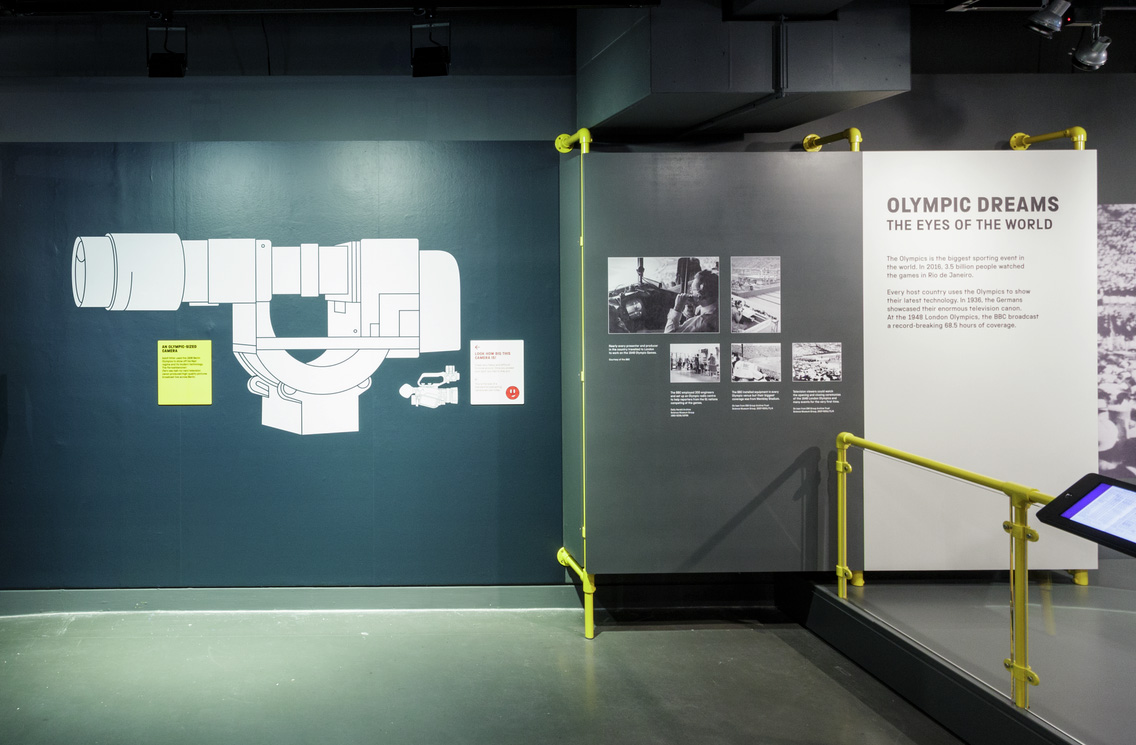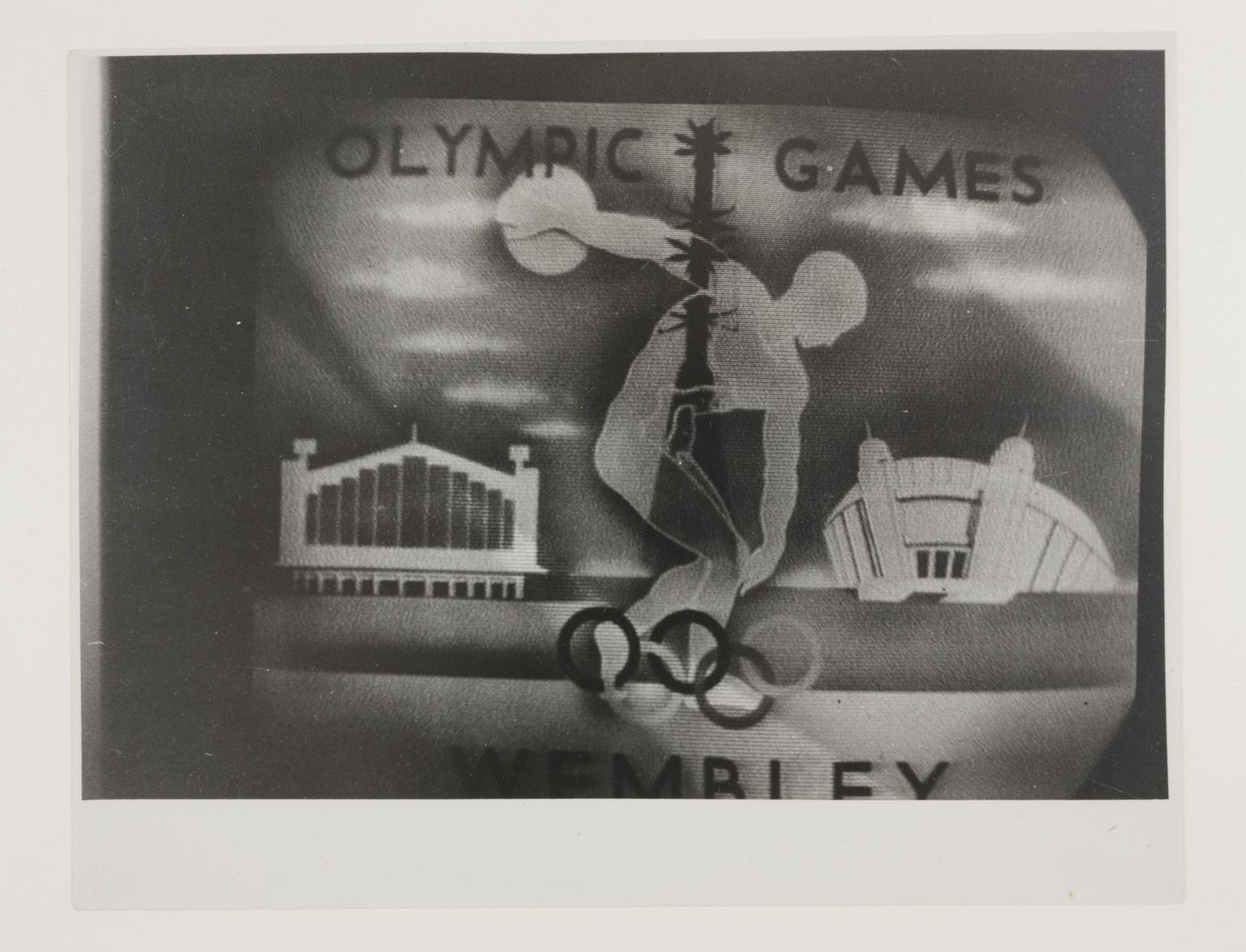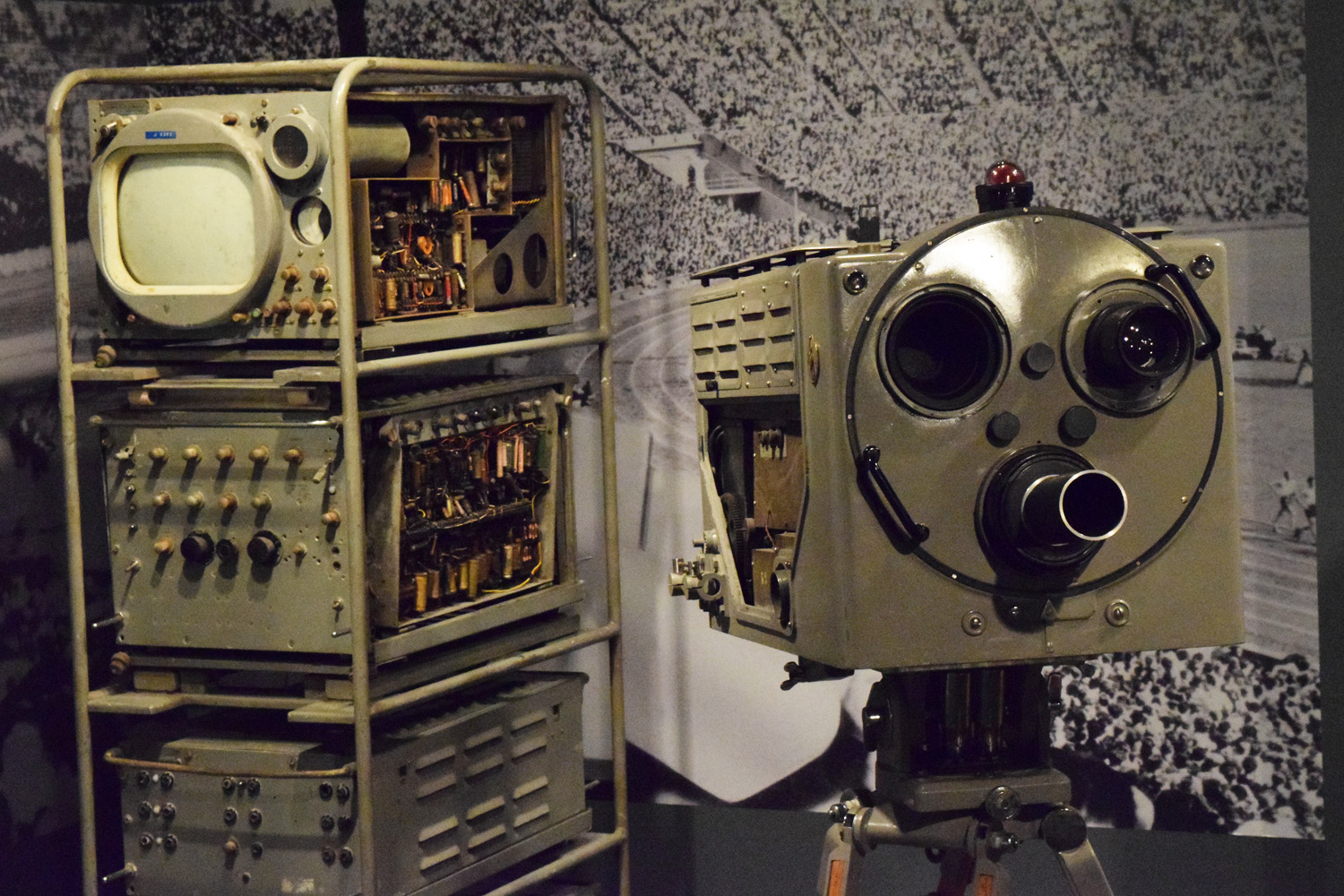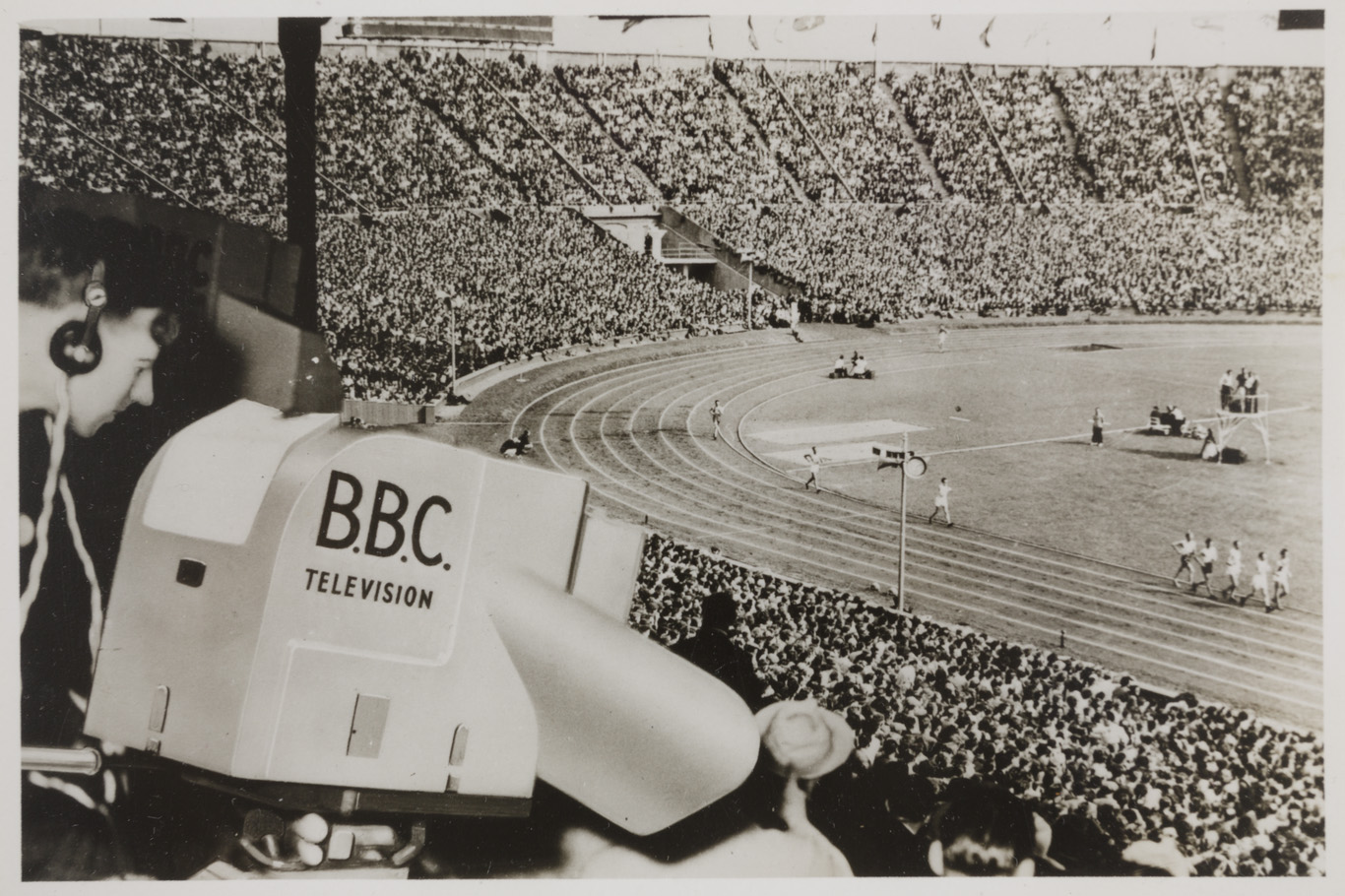Here’s a closer look at some of the equipment that made it happen, on display as part of our exhibition Action Replay.
The context of the 1948 Olympics
1948, post-war Britain: the last of the German shells had fallen silent three years earlier. After widespread disillusionment following the staggering loss of life, a renewed sense of collective feeling was beginning to swell under a new Labour government. Gaping craters were filled, cracks plastered over and crops resown. The standard of living rose. The NHS was born.
A decade earlier, Hitler’s 1936 Olympics had been an exercise in propagating a nationalist ideology. The 1948 London Games posed an opportunity for Britain to rebuild not only the economy, but a common faith in a unified nation after so much had been lost.
The eyes of the world were on London. The city teemed with overseas visitors, the so-called ‘Austerity Olympics’ a chance for the nation to show its resilience despite persisting scenes of Londoners queueing outside shops, ration books in hand. This was also an opportunity for the BBC, then a relatively young institution, to prove itself an integral part of the nation’s cultural life.
Bringing audiences into the action
As the success of the 2012 Olympics demonstrated, there are few events that can bring a fragmented nation together like a grand sporting occasion. Sport boasts the unique ability to transcend language, culture and social divides. The best way to get citizens to share in this common culture is to allow them to experience the action as it happens. Hitler understood this and invested heavily in cutting-edge technology to televise the 1938 Berlin Olympics.

One of these pieces was the Fernsehkanone—the name literally translates to ‘television cannon’. With the zoom lens attached, the camera was the same dimension as a semi-automatic rifle—measuring 2.2 metres—and is just one example of war’s lingering influence on technology.
As television sets were virtually non-existent in Germany at that time, viewers had to visit one of 28 local television parlours that each received six hours of live daily transmissions. 126,000 tickets were counted over the course of the Games. This would have been a great propaganda success for the Nazis if African-American athlete Jesse Owens hadn’t gone on to win four gold medals.
The BBC in the 1930s and 40s
Looking to build on the success of the 1936 Olympics, the BBC went to great lengths to amass state-of-the-art equipment for its own broadcast. However, television was still a rare novelty, and live broadcasts rarer still.
The first major outside broadcast was the coronation of King George VI in May 1937, followed by the Wimbledon final later that summer. Yet at the outbreak of war, BBC television was forced to shut down, due to lack of resources and the fear of broadcasts interfering with vital military transmissions.
Seven years later, it was up and running again, though uptake remained slow. Radio was the predominant medium; BBC Radio boasted ten times the budget of its televisual counterpart. At the time, only 15,000 TV licenses had been purchased, and broadcasts were only available to the London area. It would be another year before broadcasts reached the Midlands, and a year after that before pictures flickered onto screens in the North.
The BBC prepares for Olympic coverage
The Olympics recaptured public interest in television as the press made great fanfare of the BBC’s grand plans for coverage. The Radio Times marvelled at the unprecedented broadcast schedule:
It is clear a large percentage of viewers will try to see all programmers televised. It is hoped that this habit will not persist during the period of the Olympic Games or viewers will be easily recognised on the streets of London by their pallid appearance!
The BBC were offered the Palace of Arts, near Wembley stadium, as broadcasting headquarters. Two mobile control units—one in the pool and one in the stadium—fed back to the radio control centre. Each unit oversaw three cameras, with producers selecting from images displayed across monitoring screens and commentary from 12 commentators.
A BBC newsreel advertising its new equipment in the build-up to the Games talks of the luxuries offered by the mobile control units: control room staff could sit in comfort ‘instead of standing like they had to in the old vans’.

The CPS Emitron camera
The newly-developed, British-made CPS Emitron camera was the pride of the BBC. Its relative portability made it easy to cover events at short notice, especially compared to the cumbersome Super Emitron camera.
The CPS Emitron boasted a remarkably high quality picture: rich, clear and without the smearing effect which occurred in lesser cameras capturing motion. It was highly sensitive, supposedly able to capture footage even at sunset. However, there are several reports of the camera failing in the low light of the winter months. On more than one instance, bad light cut rugby broadcasts short; license-payers would be left out in the cold, with only audio coverage to keep them posted on the final throes.

The CPS Emitron’s electronic viewfinder was excitedly received. The recently-developed split optical system allowed the director to view the same image that was being recorded—a real wonder at the time.
The three turret lenses, each of a different focal length, were interchangeable, allowing the camera operator to switch between wide and zoom shots with ease. This gave the viewer the impression more cameras were being used than there actually were.
Ian Orr-Ewing, BBC broadcast director, relayed the novelty of this phenomenon in a press statement in the Radio Times:
We shall be using for the first time modern cameras with turret lenses which will enable us to provide the ideal angle of view for each individual part of the same programme. The effect of these improvements will be that each camera, instead of having one lens, will be able to use three and viewers instead of getting three different views will get nine.

A whole chain of equipment was necessary for the CPS Emitron to function. A control unit, weighing over 200kg, was used to monitor, tweak and power the camera.
In preparation for the camera’s debut at Action Replay—where it is on display for the first ever time ever—conservators were faced with the daunting task of cleaning 50-year-old cigarette ash that had accumulated in its crevices. Burn marks from smokes stubbed out on the rack are still visible—testament to the BBC control staff’s lack of concern for what they evidently failed to predict would become a piece of the nation’s heritage.
Broadcasting the Austerity Olympics
From 14.45 on 29 July 1948—as the CPS Emitron began rolling on Wembley Stadium—to the night of the closing ceremony on 14 August, 70 hours of television were broadcast. Averaging five hours a day, with transmission stretching to over seven-and-a-half hours on one day, it was an incredible feat, smashing all BBC records.
Certain they had broken the world record for longest-ever broadcast, a BBC director phoned American rival NBC—only to find out they had been pipped to the post by a somewhat less thrilling broadcast from US Congress.

The new and striking image offered by the CPS Emitron proved groundbreaking in conveying the live-action drama of the Games. The introduction of the relatively new orthicon tube completely changed the look of the televised image; fine levels of detail gave a real sense of immediacy for the first time. This reduced the barriers between the viewer and the experience, offering an extension of the physical senses.
A lasting legacy
For the BBC, the Austerity Olympics sparked the public service ideology that has ensured its longevity as a true British institution. Presenting the action in real-time, as it unfolded, was revelatory. Audiences were given the opportunity to experience moments of national glory in high-definition sight and sound with thousands of fellow viewers.
As friends and families sat huddled around their television sets, Londoners enjoyed a sense of shared unity. The nation proved itself on the world stage as as a country that pulled through wartime devastation battered and bruised, but still fighting.
Action Replay is open at the National Science and Media Museum until 23 January 2019.
For more on the Austerity Olympics, take a look at a selection of images of the 1948 Games from our collection.
I do hate to criticise, but in what is effectively a reference document, it is important to be correct.
The caption for the last picture, with the camera looking down at the race track is wrong. The camera is not a CPS Emitron but a pre war camera, a 1937 EMI Super Emitron camera. This camera used a tube of the Image Iconoscope class.
EMI used the “Emitron” branding for a range of products and it is easy to confuse them.
The BBC did not have many cameras for the 1948 Olympics and all available cameras would have been in use to cover as many events as possible.
More information on the technical aspects of the cameras used can be found here:- http://www.tvcameramuseum.org/emi/emitron/1948olympic-1.html